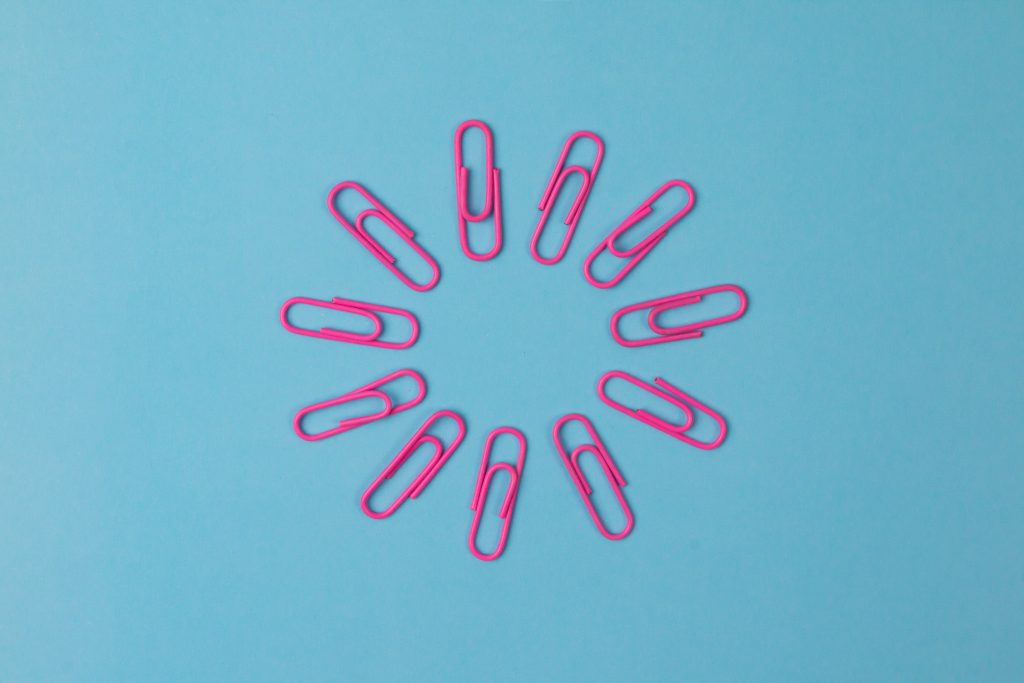Stigma in direction of people with psychological well being circumstances resembling despair is properly documented (Wooden et al., 2014) and extremely widespread (see Pattie’s Psychological Elf weblog on the prevalence of self-stigma in despair). Nonetheless, the character and course of the connection between stigma and despair has been comparatively unexplored regardless of it doubtlessly impacting approaches to therapy.
Merely put, stigma refers back to the detrimental appraisal of an individual or group of individuals primarily based on a attribute or a part of their identification that’s frowned upon by mainstream society. Complicating issues, there are additionally various kinds of stigma, together with:
Anticipated stigma (i.e., one’s expectation of how others will deal with them primarily based upon the identification in query)
Enacted stigma (i.e., experiencing discrimination primarily based upon the identification or trait in query)
Internalised or self-stigma (i.e., how one involves see oneself by means of the angle of others; Fox et al., 2018).
Moreover, stigmatised identities could also be seen, resembling ethnicity, or concealable, resembling psychological well being circumstances (Quinn et al., 2020). That stated, some psychological well being circumstances resembling body-focused repetitive behaviors (BFRBs) even have seen parts. For instance, these with BFRBs usually have evident hair-loss or pores and skin lesions (Mathew et al., 2021).
To higher perceive the connection between anticipated and internalised stigma and despair, O’Donnell and Foran (2024) undertook a scientific assessment to:
Set up whether or not anticipated and/or internalised stigma might predict ranges of despair
Assess the standard of proof for a causal relationship between stigma and despair.

Self-stigma in individuals with despair is very widespread worldwide. Exploring whether or not these with stigmatised identities are extra liable to growing despair is important to growing preventative approaches to therapy.
Strategies
Following PRISMA pointers, the authors searched 4 on-line databases (together with a gray literature database) to determine research that:
Collected quantitative information
Utilised legitimate and dependable stigma and despair measures
Concerned contributors aged 18+ with a stigmatised identification aside from despair
Included despair as an end result measure
Have been obtainable in English
The authors targeted on research with stigma as a predictor and despair as an end result. Their curiosity was on the direct hyperlink between stigma and despair, not mediating results. Consequently, they excluded research that solely reported correlational analyses or confirmed a mediation diagram as a substitute of a regression desk.
The preliminary search resulted in 2000+ attainable research, and screening proceeded in levels. The researchers piloted the primary 100 outcomes with two impartial screeners, after which every researcher independently screened all titles and abstracts, resolving discrepancies by means of dialogue. They utilized the Nationwide Institutes of Well being (NIH) high quality evaluation device for observational cohort and cross-sectional research, independently ranking research as “good,” “passable,” or “poor” and resolving inconsistencies by means of dialogue.
Outcomes
Research traits
Eighty-three research had been included within the systematic assessment. The vast majority of research had been cross-sectional (n = 73) with the second most typical kind of examine being longitudinal (n = 10). Throughout the research, there was a complete of 34,705 contributors. Most research included within the assessment had been performed in america (n = 39), with some illustration from Asia (n = 22), Africa (n = 9), and Europe (n = 6).
5 of the research targeted completely on anticipated stigma. Sixty-one research measured internalised stigma, with an additional 9 research measuring this assemble beneath ‘self-stigma’. Eight of the included research measured each anticipated and internalised stigma.
The 83 research analysed 21 totally different stigmatised identities, which the authors organised beneath the next 5 subcategories:
Sexual and gender minorities
HIV/AIDS
Sickness or disability-related (non-HIV)
Weight
Different
Primary findings
Sixty research confirmed direct proof for a optimistic hyperlink between internalised stigma and/or anticipated stigma and despair. One other 13 confirmed proof for the optimistic hyperlink with some {qualifications} (i.e., didn’t present a major relationship when different variables had been thought-about), 9 research contradicted the expected hyperlink, and one examine discovered that internalized stigma predicted decrease despair. In whole, 12% of research didn’t help the expected hyperlink.
Outcomes by stigmatised identification class
33.7% of the research targeted on the hyperlink between stigma associated to sexual or gender minority standing and despair, with roughly half (53.6%) supporting a optimistic relationship between anticipated and/or internalised stigma with ranges of/probability of despair.
32.5% of the research examined the hyperlink between HIV/AIDS stigma and despair. 23 of the 27 research (85.2%) discovered a major optimistic hyperlink between anticipated and/or internalised stigma and despair.
9.6% of the research targeted on the hyperlink between weight stigma and despair. The entire research on this class discovered a major optimistic hyperlink between anticipated and/or internalised stigma and despair.
15.7% of the research explored the connection between sickness or disability-related stigma and despair, with probably the most generally studied sicknesses being COVID-19 and most cancers. Given the vary of circumstances, this class lacked ample cohesion for significant quantitative evaluation and comparability.
Just like the above, though 8.9% of included research had been categorised as “different”, there was not sufficient similarity amongst them to attract conclusions.
Outcomes by examine design
Of the 73 cross-sectional research included, the bulk (n = 56; 76.7%) supported a major optimistic relationship between internalised and/or anticipated stigma and despair.
As compared, of the ten longitudinal research reviewed, solely 4 (40%) discovered a optimistic impact of internalised stigma on elevated depressive signs over time.

Of the 83 research included on this systematic assessment, 60 discovered a direct optimistic hyperlink between anticipated and/or internalized stigma and signs of despair.
Conclusions
This systematic assessment by O’Donnell and Foran (2024) concluded that anticipated and/or internalised stigma is a predictor of despair. Proof throughout samples confirmed internalised and/or anticipated stigma to be considerably and positively linked to ranges of despair, impartial of things resembling age, gender identification, training, sexual orientation, and enacted stigma, though the energy of the connection various by kind of stigmatised identification. Provided that outcomes various significantly by examine design, with cross-sectional research demonstrating a extra constant relationship than longitudinal research, the authors recommend additional examination of the impression of stigma over time.

Whereas cross-sectional research broadly help stigma as a predictor of despair, longitudinal research present combined outcomes, highlighting the necessity for additional analysis on the connection between stigma and despair.
Strengths and limitations
Strengths
Prior analysis has targeted on internalised and enacted stigma in direction of individuals with despair. This assessment makes a brand new contribution by highlighting how pre-existing stigma can impression one’s despair, furthering our understanding of how marginalised populations expertise this psychological well being situation in distinctive methods.
The methodological strengths of this text embrace the authors’ adherence to the NIH high quality evaluation device for commentary cohort and cross-sectional research, which was used to conduct a top quality evaluation of every included examine. Research had been of “good” or “truthful” high quality, indicating the relative reliability of the findings.
The vast majority of research included within the assessment used well-validated measures of internalised stigma, anticipated stigma, and despair, which have been used throughout all kinds of contexts and persistently present dependable outcomes measuring the supposed assemble.
Limitations
Methodological limitations embrace the usage of a scientific assessment moderately than a meta-analysis, which might enable for a extra exact estimate of impact sizes and supply extra quantitative analysis and synthesis of the info. It’s also not fully clear why the authors determined in opposition to a meta-analysis.
The authors didn’t embrace kappa values to point inter-rater reliability between the 2 screeners. It’s due to this fact unknown if there was good reliability between the screeners, which might enhance confidence within the findings.
The authors didn’t elaborate on how they retrieved the recognized data, and 19 stories had been unavailable because of the authors’ requests for entry not being returned; nevertheless, they don’t make it clear how they went about attempting to acquire these stories. These stories might doubtlessly maintain necessary info in relation to the systematic assessment, which might impression its validity and reliability.
The vast majority of research included within the assessment had been cross-sectional, that means that the authors can not make claims about how stigma impacts despair over time. Nonetheless, understanding the connection over time is important to establishing a causal relationship, which may subsequently assist us to know what must be focused in interventions.
Findings from longitudinal research had been totally different from the outcomes of the cross-sectional research included, indicating a weaker hyperlink between stigma and despair. Nonetheless, provided that the variety of longitudinal research included was a lot decrease than the variety of cross-sectional research, it’s troublesome to attract conclusions in regards to the significance of this distinction. Additional analysis would profit from a extra balanced pattern.

Whereas the assessment utilised well-validated measures, limitations embrace a scarcity of longitudinal research, and a lacking rationalization as to why a meta-analysis wasn’t undertaken.
Implications for observe
The outcomes of this assessment are necessary within the context of psychological well being circumstances past main depressive dysfunction. As reported by Thornicroft et al. (2016) of their Lancet Fee, psychological well being circumstances carry a double jeopardy to those that expertise the signs of their dysfunction and are topic to stigma, with the latter usually reported as feeling worse than the previous. Many therapeutic approaches nonetheless concentrate on the first signs of the dysfunction with out contemplating the impression of continual stigma and disgrace. That is significantly the case for lesser-known issues, the place lack of know-how and understanding drive greater ranges of stigma.
A working example is body-focused repetitive behaviors (BFRBs) resembling trichotillomania (hair pulling) and dermatillomania, or excoriation dysfunction (skin-picking). These issues are related to important stigma and depressive signs (Mathew et al., 2021), however are so stigmatized that many individuals with BFRBs who method well being professionals for help discover that the ‘consultants’ know little to nothing about their situation (Tucker et al., 2011; Woods et al., 2006).
Moreover, whereas psychological well being circumstances are sometimes thought-about a concealable stigma, it could be that individuals with BFRBs expertise self-stigma in ways in which align extra with those that expertise seen stigmas resembling weight stigma. Self-stigma can delay treatment-seeking, and people with seen stigmas might have the next probability of experiencing internalised and anticipated stigma, resulting in continual disgrace, which can then result in despair. These insights can inform destigmatisation efforts for clinicians and researchers to enhance medical outcomes for individuals with BFRBs and different psychological well being circumstances which might be extra seen.
For clinicians, it is very important:
Deal with stigma on the outset of therapy. Self-stigma can deter treatment-seeking, in addition to intrude with therapy adherence (Kamaradova et al., 2016). Due to this fact, it is very important ask purchasers throughout evaluation about features of their identification that really feel stigmatised in an effort to proactively determine and discover methods of addressing this potential barrier.
Construct purchasers’ consciousness of the psychological results related to holding a stigmatised identification, alongside figuring out components that will shield in opposition to these results.
For researchers, it is very important:
Discover the connection between internalised and anticipated stigma in under-researched areas like BFRBs. For BRFBs, this analysis might embrace excoriation dysfunction and trichotillomania as the end result measures.
Utilise each quantitative and qualitative strategies to discover the event, upkeep and impression of self-stigma in people with BFRBs.
Develop destigmatisation interventions tailor-made to these with seen stigmas resembling BFRBs.

Insights from this assessment can inform destigmatisation efforts to enhance therapy outcomes for individuals with different types of seen stigma resembling body-focused repetitive behaviors (BFRBs).
Assertion of pursuits
None.
Hyperlinks
Major paper
O’Donnell, A. T., & Foran, A.-M. (2024). The hyperlink between anticipated and internalized stigma and despair: A scientific assessment. Social Science & Medication, 349, 116869–116869.
Different references
Fox, A. B., Earnshaw, V. A., Taverna, E. C., & Vogt, D. (2018). Conceptualizing and measuring psychological sickness stigma: The psychological sickness stigma framework and important assessment of measures. Stigma and Well being, 3(4), 348–376.
Gonsalves, P. (2023). Self-stigma for individuals with despair: systematic assessment presents world prevalence information, danger components and protecting components. The Psychological Elf.
Kamaradova, D., Latalova, Ok., Prasko, J., Kubinek, R., Vrbova, Ok., Mainerova, B., … & Tichackova, A. (2016). Connection between self-stigma, adherence to therapy, and discontinuation of remedy. Affected person Choice and Adherence, 1289-1298.
Mathew, A. S., Harvey, A. M., & Lee, H.-J. (2021). Improvement of the social issues in people with body-focused repetitive behaviors (SCIB) scale. Journal of Psychiatric Analysis, 135, 218–229.
Quinn, D. M., Camacho, G., Pan-Weisz, B., & Williams, M. Ok. (2019). Seen and concealable stigmatized identities and psychological well being: Experiences of racial discrimination and anticipated stigma. Stigma and Well being.
Thornicroft, G., Mehta, N., Clement, S., Evans-Lacko, S., Doherty, M., Rose, D., … & Henderson, C. (2016). Proof for efficient interventions to scale back mental-health-related stigma and discrimination. The Lancet, 387(10023), 1123-1132.
Tucker, B. T., Woods, D. W., Flessner, C. A., Franklin, S. A., & Franklin, M. E. (2011). The Pores and skin Choosing Affect Undertaking: phenomenology, interference, and therapy utilization of pathological pores and skin selecting in a population-based pattern. Journal of Anxiousness Problems, 25(1), 88-95.
Wooden, L., Birtel, M., Alsawy, S., Pyle, M., & Morrison, A. (2014). Public perceptions of stigma in direction of individuals with schizophrenia, despair, and anxiousness. Psychiatry Analysis, 220(1-2), 604–608.
Woods, D. W., Flessner, C. A., Franklin, M. E., Keuthen, N. J., Goodwin, R. D., Stein, D. J., & Walther, M. R. (2006). The Trichotillomania Affect Undertaking (TIP): exploring phenomenology, purposeful impairment, and therapy utilization. Journal of Scientific Psychiatry, 67(12), 1877.
Picture credit
Source link



